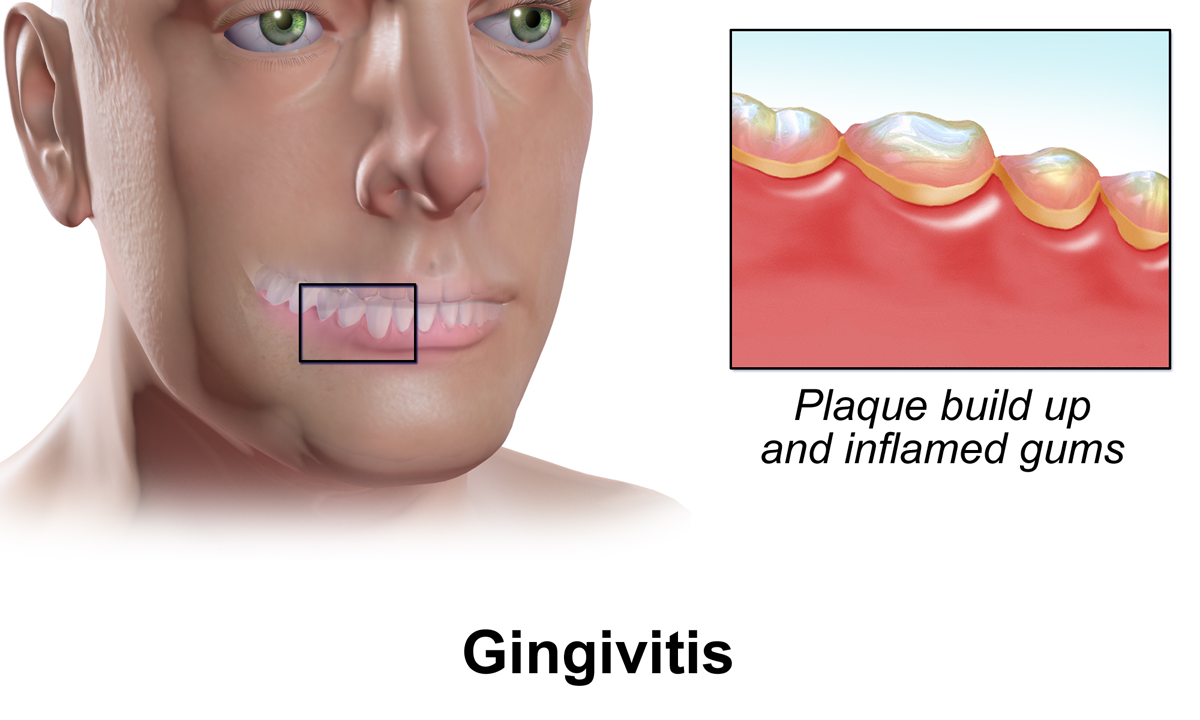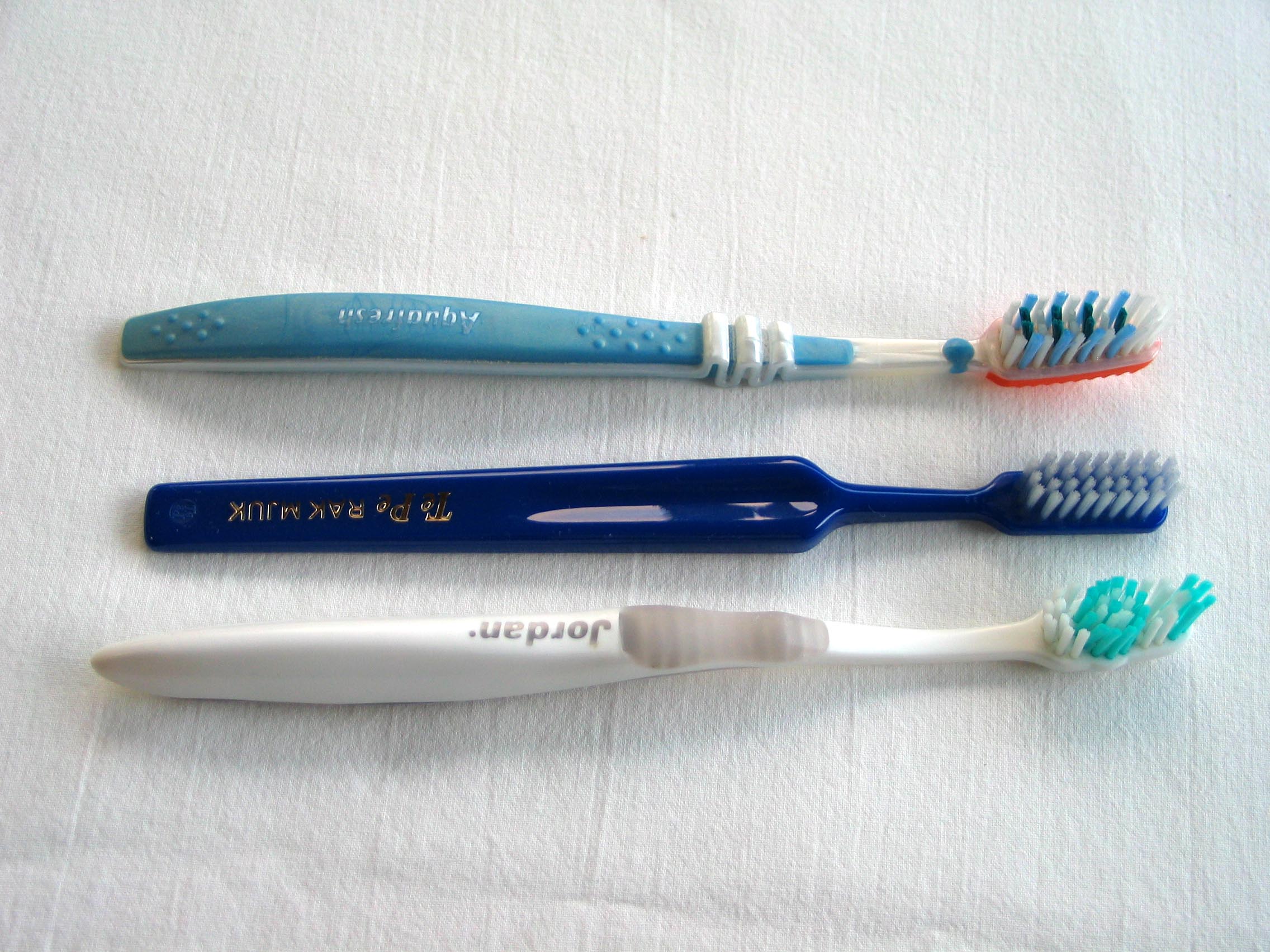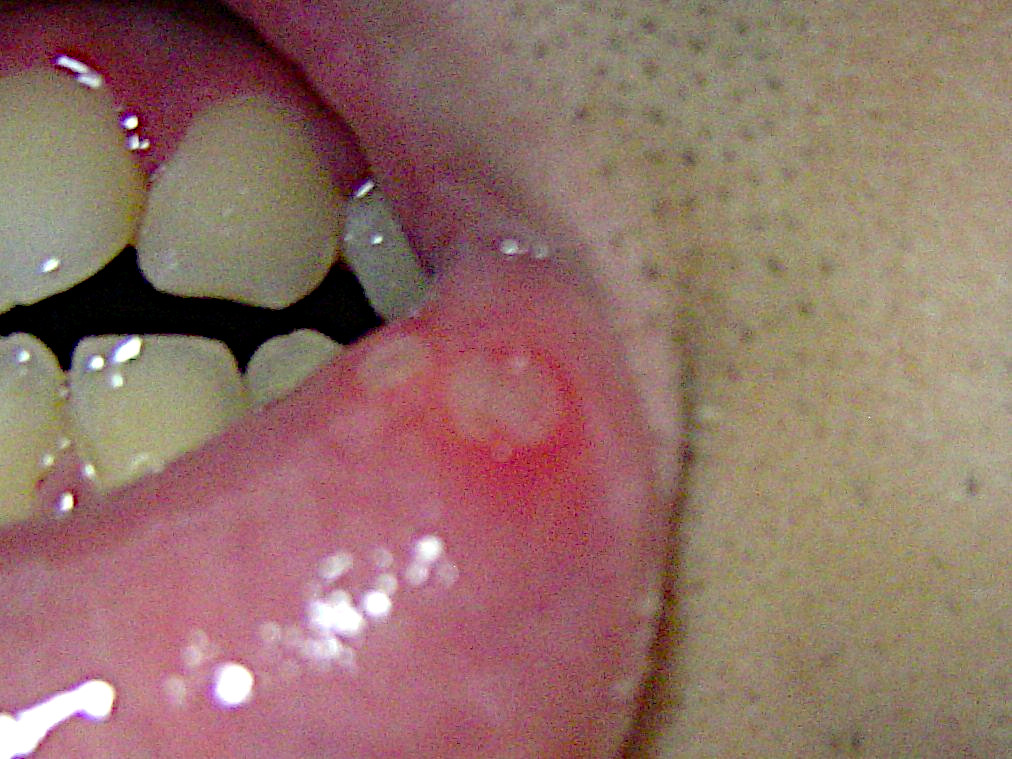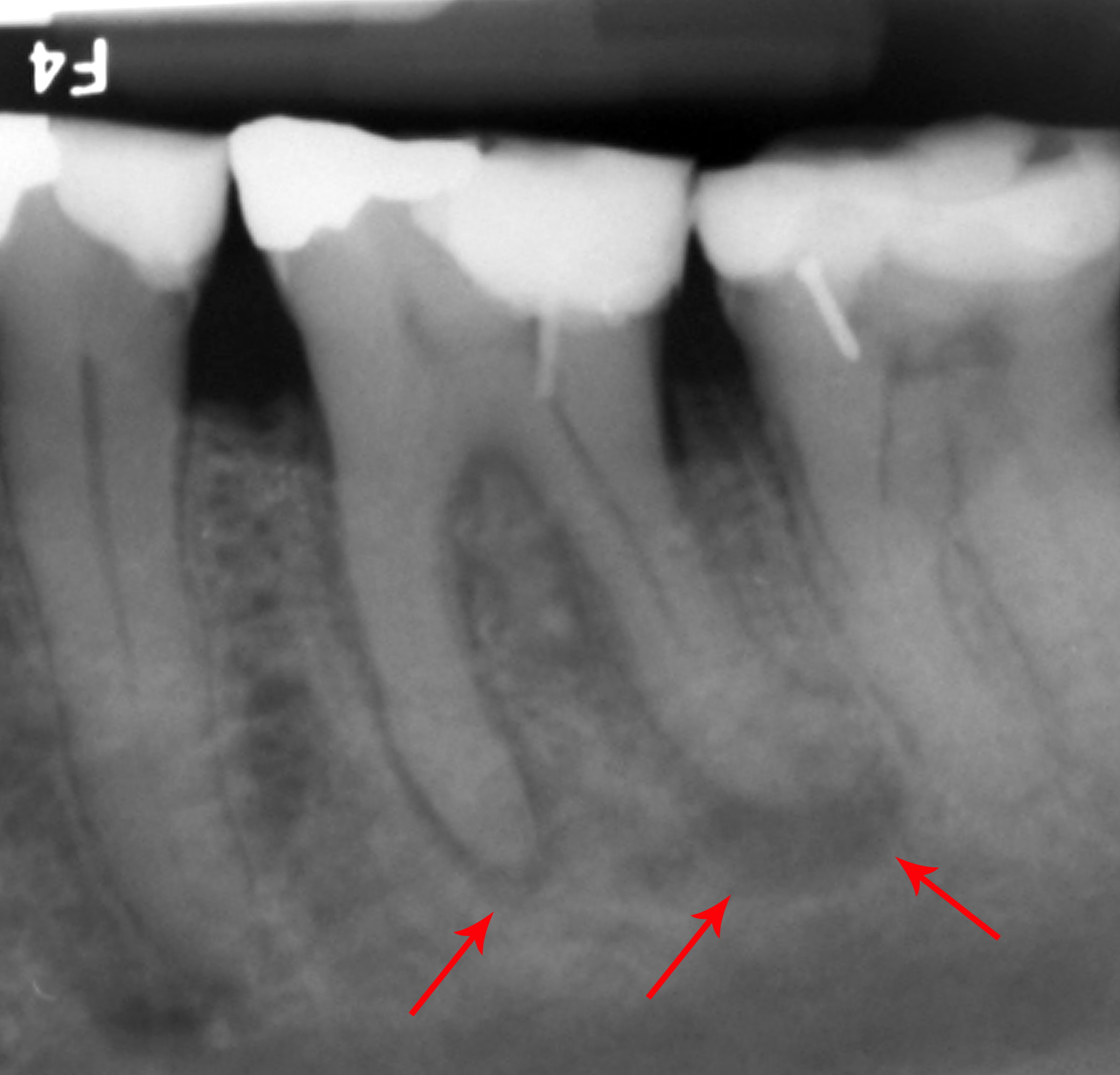|
Mouthrinse
Mouthwash, mouth rinse, oral rinse, or mouth bath is a liquid which is held in the mouth passively or swirled around the mouth by contraction of the perioral muscles and/or movement of the head, and may be gargled, where the head is tilted back and the liquid bubbled at the back of the mouth. Usually mouthwashes are antiseptic solutions intended to reduce the microbial load in the mouth, although other mouthwashes might be given for other reasons such as for their analgesic, anti-inflammatory or anti-fungal action. Additionally, some rinses act as saliva substitutes to neutralize acid and keep the mouth moist in xerostomia (dry mouth). Cosmetic mouthrinses temporarily control or reduce bad breath and leave the mouth with a pleasant taste. Rinsing with water or mouthwash after brushing with a fluoride toothpaste can reduce the availability of salivary fluoride. This can lower the anti-cavity re-mineralization and antibacterial effects of fluoride. Fluoridated mouthwash may miti ... [...More Info...] [...Related Items...] OR: [Wikipedia] [Google] [Baidu] |
Oral Hygiene
Oral hygiene is the practice of keeping one's oral cavity clean and free of disease and other problems (e.g. bad breath) by regular brushing of the teeth (dental hygiene) and adopting good hygiene habits. It is important that oral hygiene be carried out on a regular basis to enable prevention of dental disease and bad breath. The most common types of dental disease are tooth decay (''cavities'', ''dental caries'') and gum diseases, including gingivitis, and periodontitis. General guidelines for adults suggest brushing at least twice a day with a fluoridated toothpaste: brushing before going to sleep at night and after breakfast in the morning. Cleaning between the teeth is called interdental cleaning and is as important as tooth brushing. This is because a toothbrush cannot reach between the teeth and therefore only removes about 50% of plaque from the surface of the teeth. There are many tools available for interdental cleaning which include Dental floss, floss, tape and interden ... [...More Info...] [...Related Items...] OR: [Wikipedia] [Google] [Baidu] |
Gingivitis
Gingivitis is a non-destructive disease that causes inflammation of the gums; ulitis is an alternative term. The most common form of gingivitis, and the most common form of periodontal disease overall, is in response to bacterial biofilms (also called plaque) that are attached to tooth surfaces, termed ''plaque-induced gingivitis''. Most forms of gingivitis are plaque-induced. While some cases of gingivitis never progress to periodontitis, periodontitis is always preceded by gingivitis. Gingivitis is reversible with good oral hygiene; however, without treatment, gingivitis can progress to periodontitis, in which the inflammation of the gums results in tissue destruction and bone resorption around the teeth. Periodontitis can ultimately lead to tooth loss. Signs and symptoms The symptoms of gingivitis are somewhat non-specific and manifest in the gum tissue as the classic signs of inflammation: *Swollen gums *Bright red gums *Gums that are tender or painful to the touch *B ... [...More Info...] [...Related Items...] OR: [Wikipedia] [Google] [Baidu] |
Toothpaste
Toothpaste is a paste or gel dentifrice that is used with a toothbrush to clean and maintain the aesthetics of Human tooth, teeth. Toothpaste is used to promote oral hygiene: it is an abrasive that aids in removing dental plaque and food from the teeth, assists in suppressing halitosis, and delivers active ingredients (most commonly fluoride) to help prevent tooth decay (dental caries) and gum disease (gingivitis).American Dental Association Description of Toothpaste Due to variations in composition and fluoride content, not all toothpastes are equally effective in maintaining oral health. The decline of tooth decay during the 20th century has been attributed to the introduction and regular use of fluoride-containing toothpastes worldwide. Large amounts of swallowed toothpaste can be poisonous. Common colors for toothpaste include white (sometimes with colored stripes or green tint) and blue. History Early toothpastes Since 5000 BCE, the Egyptians made a tooth powder, which cons ... [...More Info...] [...Related Items...] OR: [Wikipedia] [Google] [Baidu] |
Flossing
Dental floss is a cord of thin filaments, typically made of nylon or silk, used in interdental cleaning to remove food and dental plaque from between teeth or places a toothbrush has difficulty reaching or is unable to reach. Its regular use as part of oral cleaning is intended to maintain oral health. Use of floss is recommended to prevent gingivitis and the build-up of plaque. The American Dental Association claims that up to 80% of plaque can be removed by flossing, and it may confer a particular benefit in individuals with orthodontic devices. However, empirical scientific evidence demonstrating the clinical benefit of flossing as an adjunct to routine tooth brushing alone remains limited. History Levi Spear Parmly (1790-1859), a dentist from New Orleans, is credited with inventing the first form of dental floss. In 1819, he recommended running a waxen silk thread "through the interstices of the teeth, between their necks and the arches of the gum, to dislodge that irr ... [...More Info...] [...Related Items...] OR: [Wikipedia] [Google] [Baidu] |
Dental Caries
Tooth decay, also known as caries,The word 'caries' is a mass noun, and is not a plural of 'carie'.'' is the breakdown of teeth due to acids produced by bacteria. The resulting cavities may be a number of different colors, from yellow to black. Symptoms may include pain and difficulty eating. Complications may include periodontal disease, inflammation of the tissue around the tooth, tooth loss and infection or dental abscess, abscess formation. Tooth regeneration is an ongoing Stem-cell therapy, stem cell–based field of study that aims to find methods to reverse the effects of decay; current methods are based on easing symptoms. The cause of cavities is acid from bacteria dissolving the hard tissues of the teeth (Tooth enamel, enamel, dentin and cementum). The acid is produced by the bacteria when they break down food debris or sugar on the tooth surface. Simple sugars in food are these bacteria's primary energy source and thus a diet high in simple sugar is a risk factor. I ... [...More Info...] [...Related Items...] OR: [Wikipedia] [Google] [Baidu] |
Dysgeusia
Dysgeusia, also known as parageusia, is a distortion of the sense of taste. Dysgeusia is also often associated with ageusia, which is the complete lack of taste, and hypogeusia, which is a decrease in taste sensitivity. An alteration in taste or smell may be a secondary process in various disease states, or it may be the primary symptom. The distortion in the sense of taste is the only symptom, and diagnosis is usually complicated since the sense of taste is tied together with other sensory systems. Common causes of dysgeusia include chemotherapy, asthma treatment with albuterol, and zinc deficiency. Liver disease, hypothyroidism, and rarely, certain types of seizures can also lead to dysgeusia. Different drugs can also be responsible for altering taste and resulting in dysgeusia. Due to the variety of causes of dysgeusia, there are many possible treatments that are effective in alleviating or terminating the symptoms. These include artificial saliva, pilocarpine, zinc supplementat ... [...More Info...] [...Related Items...] OR: [Wikipedia] [Google] [Baidu] |
Bad Breath
Bad breath, also known as halitosis, is a symptom in which a noticeably unpleasant breath odour is present. It can result in anxiety among those affected. It is also associated with depression and symptoms of obsessive compulsive disorder. The concerns of bad breath may be divided into genuine and non-genuine cases. Of those who have genuine bad breath, about 85% of cases come from inside the mouth. The remaining cases are believed to be due to disorders in the nose, sinuses, throat, lungs, esophagus, or stomach. Rarely, bad breath can be due to an underlying medical condition such as liver failure or ketoacidosis. Non-genuine cases occur when someone complains of having bad breath but other people cannot detect it. This is estimated to make up between 5% and 72% of cases. The treatment depends on the underlying cause. Initial efforts may include tongue cleaning, mouthwash, and flossing. Tentative evidence supports the use of mouthwash containing chlorhexidine or cetylpyridi ... [...More Info...] [...Related Items...] OR: [Wikipedia] [Google] [Baidu] |
Toothbrush
A toothbrush is a special type of brush used to clean the Human tooth, teeth, gingiva, gums, and tongue. It consists of a head of tightly clustered bristles, atop of which toothpaste can be applied, mounted on a handle (grip), handle which facilitates the cleaning of hard-to-reach areas of the mouth. They should be used in conjunction with something to clean between the teeth where the bristles of the toothbrush cannot reach - for example Dental floss, floss, tape, interdental brushes or toothpicks. They are available with different bristle textures, sizes, and forms. Most dentists recommend using a soft toothbrush since hard-bristled toothbrushes can damage tooth enamel and irritate the gums. Because many common and effective ingredients in toothpaste are harmful if swallowed in large doses, tooth paste should instead be spat out. The act of brushing teeth is most often done at a sink within the kitchen or bathroom, where the brush may be rinsed off afterwards to remove any deb ... [...More Info...] [...Related Items...] OR: [Wikipedia] [Google] [Baidu] |
American Dental Association
The American Dental Association (ADA) is an American professional dental association. Established in 1859 and with over 159,000 current members, ADA is the world's largest and oldest national dental association. The organization lobbies on behalf of the American dental profession and provides dental accreditation. The ADA publishes the '' Journal of the American Dental Association'' and ''JADA Foundational Science''. As part of its lobbying efforts, the ADA has sought to restrict non-dentists (such as dental hygienists and dental therapists) from providing basic dental care. The organization has played an important role in blocking the inclusion of dental coverage in Medicare. The ADA has expressed opposition to the opening of new dental schools or to increasing the number of dentists in the United States, even as the United States trains almost half as many dental students (relative to population) in the 2000s as it did in the 1980s. History The American Dental Associati ... [...More Info...] [...Related Items...] OR: [Wikipedia] [Google] [Baidu] |
Listerine Products
Listerine (, ) is an American brand of antiseptic mouthwash that is promoted with the slogan "Kills germs that cause bad breath". Named after Joseph Lister, who pioneered antiseptic surgery at the Glasgow Royal Infirmary in United Kingdom, Listerine was developed in 1879 by Joseph Lawrence, a chemist in St. Louis, Missouri. Originally marketed by the Lambert Pharmacal Company (which later became Warner–Lambert), Listerine has been manufactured and distributed by Johnson & Johnson since that company's acquisition of Pfizer's consumer healthcare division on December 20, 2006. The Listerine brand name is also used in toothpaste, chewable tablets, and self-dissolving teeth-whitening strips. History Inspired by Louis Pasteur's ideas on microbial infection, the English doctor Joseph Lister demonstrated in 1865 that use of carbolic acid on surgical dressings would significantly reduce rates of post-surgical infection. Lister's work in turn inspired St. Louis-based doctor Josep ... [...More Info...] [...Related Items...] OR: [Wikipedia] [Google] [Baidu] |
Aphthous Stomatitis
Aphthous stomatitis, or recurrent aphthous stomatitis (RAS), commonly referred to as a canker sore or salt blister, is a common condition characterized by the repeated formation of benignity, benign and non-contagious disease, contagious mouth ulcers (aphthae) in otherwise healthy individuals. The cause is not completely understood but involves a T cell-mediated immune response triggered by a variety of factors which may include nutritional deficiencies, local Physical trauma, trauma, Stress (biology), stress, hormonal influences, allergies, genetic predisposition, certain foods, dehydration, some food additives, or some hygienic chemical additives like Sodium dodecyl sulfate#Mouth ulceration, SDS (common in toothpaste). These ulcers occur periodically and heal completely between attacks. In the majority of cases, the individual ulcers last about 7–10 days, and ulceration episodes occur 3–6 times per year. Most appear on the Stratified squamous epithelium#Non-keratinized, n ... [...More Info...] [...Related Items...] OR: [Wikipedia] [Google] [Baidu] |
Tooth Extraction
A dental extraction (also referred to as tooth extraction, exodontia, exodontics, or informally, tooth pulling) is the removal of teeth from the dental alveolus (socket) in the alveolar bone. Extractions are performed for a wide variety of reasons, but most commonly to remove teeth which have become unrestorable through tooth decay, periodontal disease, or dental trauma, especially when they are associated with toothache. Sometimes impacted wisdom teeth (wisdom teeth that are stuck and unable to grow normally into the mouth) cause recurrent infections of the gum ( pericoronitis), and may be removed when other conservative treatments have failed (cleaning, antibiotics and operculectomy). In orthodontics, if the teeth are crowded, healthy teeth may be extracted (often bicuspids) to create space so the rest of the teeth can be straightened. Procedure Extractions could be categorized into non-surgical (simple) and surgical, depending on the type of tooth to be removed and o ... [...More Info...] [...Related Items...] OR: [Wikipedia] [Google] [Baidu] |










